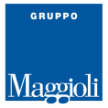Light art Temporary installations 2015/2016
| Data pubblicazione | Dicembre 2016 |
| Data ristampa | |
| Autori | Gisella Gellini |
| ISBN | 8891620033 |
| ean | 9788891620033 |
| Tipo | Ebook |
| Collana | Politecnica |
| Editore | Maggioli Editore |
| Dimensione | Epub |
| Data pubblicazione | Dicembre 2016 |
| Data ristampa | |
| Autori | Gisella Gellini |
| ISBN | 8891620033 |
| ean | 9788891620033 |
| Tipo | Ebook |
| Collana | Politecnica |
| Editore | Maggioli Editore |
| Dimensione | Epub |
L’ottava edizione della mia pubblicazione Light Art in Italy, quella a cavallo degli anni 2015 e 2016, si apre con le opere della mostra “Luce4Good - Light Art Ensemble 2015”, realizzata a Milano nel Dicembre 2015 nella ex chiesa di San Carpoforo in Brera; un evento nato grazie alla convergenza di fattori, discipline e settori diversi ed io credo che la multidisciplinarietà sia una esigenza fondamentale della società contemporanea. Lo scopo principale della mostra era quello di supportare il progetto Pink is Good della Fondazione Veronesi per la ricerca scientifica indirizzata alla cura del tumore al seno.
L’arte si è fatta così veicolo di un messaggio di vita, grazie a uno sponsor sensibile come QVC e all’Accademia di Brera partner naturale che ha messo a disposizione gratuitamente lo spazio espositivo.
L’evento ha avuto quindi un intento sociale e culturale insieme: il tema della mostra, il seno femminile e la cura di questo male insidioso che affligge milioni di donne nel mondo, ha una valenza sia sociale che emotiva. Il seno materno, strumento di vita e legame fondamentale fra madre e figlio, ha sempre esercitato un forte richiamo emotivo ed è stato il soggetto di numerose opere pittoriche. Con questo evento la Light Art ha affrontato forse per la prima volta questo tema e vale quindi la pena evidenziare questo primo passo, che potrebbe essere lo spunto per eventi analoghi, coinvolgendo altri artisti.
Un altro aspetto della convergenza realizzata con la mostra è la collaborazione fra arte, scienza e industria, che ne ha consentito la realizzazione, aspetto questo che è del resto uno dei motivi che mi ha spinto a iniziare la mia ricerca sulla Light Art e che ispira il mio corso alla Scuola del Design del Politecnico di Milano. Da questo punto di vista va poi evidenziato che l’evento è stato curato in collaborazione fra la sottoscritta, docente di Light Art alla Scuola di Design del Politecnico di Milano ed il Professor Domenico Nicolamarino, docente di illuminotecnica all’Accademia di Belle Arti di Brera. Voglio poi sottolineare che la mostra è stata realizzata al termine dell’International Year of Light – Anno Internazionale della Luce e ne ha rappresentato quindi anche una conclusione ideale.
Per una descrizione esauriente delle opere esposte, rimando al contesto di questo libro; qui voglio solo sottolineare che gli artisti avevano accettato con entusiasmo di partecipare e realizzare opere site-specific corredate da un video realizzato da loro stessi.
Con il loro linguaggio della luce hanno rappresentato la loro visione o esperienza con la malattia, tema della ricerca, o quello della femminilità. C’è chi lo ha fatto in modo molto esplicito, come nel seno in porcellana luminescente di Nicola Boccini, oppure la collina-seno di Donatella Schilirò, irrigata dalla luce del sapere. Molto forte il messaggio di Federica Marangoni, con la sua mano in vetro di Murano ottenuta da un calco di una mano della stessa artista, aperta davanti al NO rosso come nell’atto di fermare la malattia. Lo stesso segno grafico, casualmente, ha ispirato anche Arthur Duff per la sua struttura luminosa realizzata con un sottilissimo tubo neon. Per LeoNilde Carabba la guarigione del corpo non può prescindere dall’anima, dalla psiche, come espresso nei riferimenti esoterici che si possono leggere nella sua opera. Prende dal mondo dei fiori la femminilità di Maria Cristiana Fioretti e Nicola Evangelisti, con riferimenti al colore rosa che caratterizza Pink is Good. Con il suo serpente Nino Alfieri allude invece alla natura ciclica e alle sue capacità rigeneratrici, oltre a essere un riferimento al Caduceo di Hermes o al Colubro sul bastone di Esculapio, simboli dell’arte di saper preparare medicine. Anche Marco Brianza nei suoi video si rifà a una medicina, quella del cibo, ispirandosi alle raccomandazioni dietetiche della Fondazione Veronesi. Infine, Carlo Bernardini nella sua opera esprime la metafora dell’ombra che pur disegnandosi sulle superfici di uno spazio non riesce però ad attraversarlo. Resta solo la luce. Che, traslato nel tema della mostra, rafforza il messaggio di speranza dell’oscurità del male che viene vinta dalla luce della conoscenza.
Gisella Gellini, architetto, si è laureata a Firenze con una tesi sulla Restaurazione e organizzazione museografica di Palazzo Schifanoia di Ferrara. Ricercatrice della cultura della luce con particolare riferimento alla Light Art, ha collaborato con il collezionista Giuseppe Panza di Biumo.Nel 2009 è stata la curatrice dell’esposizione Dan Flavin nella Collezione Panza al Museo Berardo a Lisbona e dell’installazione Light Blade di Nicola Evangelisti presso Villa Reale a Milano. Nel 2010 ha curato la mostra collettiva Luces – Light Art from Italy e nel 2012 la personale di Fabrizio Corneli JETZT Archäologische Schatten, entrambe allestite al Museo Archeologico di Francoforte. Nel 2014 è stata la curatrice, insieme a Domenico Nicolamarino, docente dell’Accademia di Belle Arti di Brera, della mostra-convegno Light Art Ensemble che si è tenuta nell’ex chiesa di San Carpoforo a Milano. Nello stesso anno è stata la direttrice artistica di Arezzo in Luce, un evento su scala urbana con installazioni luminose di Sebastiano Romano. Nel dicembre 2015, sempre con Domenico Nicolamarino, ha curato la mostra Luce4Good, seconda edizione di Light Art Ensemble, sponsorizzata da QVC a favore della ricerca contro il tumore al seno nell'ambito del progetto Pink is Good della Fondazione Veronesi. Dal 2009 cura la pubblicazione annuale del libro Light Art in Italy che raccoglie ogni anno le principali installazioni temporanee di Light Art in Italia. Dal 2011 è docente del corso Light Art e Design della Luce presso la Scuola del Design del Politecnico di Milano. Come esperta di Light Art scrive per riviste specializzate nel settore dell’illuminazione, collabora con l’Accademia di Belle Arti di Brera ed è relatrice in diversi seminari e workshop.
The eighth edition of my Light Art in Italy publication, the one that spans between 2015 and 2016, begins with the works of Luce4Good - Light Art Ensemble 2015, which took place in Milan in December 2015 at the former San Carpoforo church in the Brera district; an event whose realization was due to the concurrence of different factors, disciplines and sectors, and I believe that multidisciplinary is a fundamental need of the contemporary society.
The main scope of the exhibition was to support the Pink is Good project of Fondazione Veronesi for the scientific research aimed at finding a cure against the breast cancer.
In this way art has turned into vehicle of a life’s message, thanks to a caring sponsor like QVC and the Brera Academy as obvious partner that lent the exhibiting space at no cost.
The event therefore had both a social and a cultural aim: the topic of the exhibition, the female breast and the cure of that wicked disease affecting millions of women all over the world, bears both a social and emotive meaning. The mother breast, a life’s tool and fundamental link between mother and son, has always been conveying a strong emotional appeal and has been the subject of many paintings. With that event Light Art has faced, perhaps for the first time, such a topic and thus it is worth underlying this first step that could be the starting point for similar events, involving other artists.
Another issue concerning that concurrence achieved by the exhibition is the co-operation among arts, science and industry that allowed its realization, an issue that, moreover, is one of the reasons that led me to start my research on Light Art and that is inspiring my course at the School of Design of the Milan’s Polytechnic. From that viewpoint it must be pointed out that the curators of the event were myself, Light art teacher at Milan’s Polytechnic, and Professor Domenico Nicolamarino, a lighting technology teacher at the Brera Fine Arts Academy. Then I would like to underline that the exhibition occurred at the end of the International Year of Light and thus it represented also an ideal ending of it. For an exhaustive description of the exhibited works, you should kindly refer to the context of this book; here I wish only to mention that the artists accepted with enthusiasm to take part in it and released site-specific works that were accompanied by video shots by the same artists. By means of the language of light they expressed either their viewpoint or experience with that illness - the subject of the research - or the topic of womanliness. Someone did it in an explicit way, such as in the case of the luminescent porcelain breast by Nicola Boccini, or the breast-hill of Donatella Schilirò, watered by the knowledge’s light. Quite strong was the message of Federica Marangoni, with her Murano glass hand, obtained from a cast of her hand, standing open in front of a red NO as in the gesture of stopping the illness. The same graphic sign, by chance, inspired also Arthur Duff for his luminous structure made from a very thin neon light tube. For LeoNilde Carabba the healing of the body must take into account also the soul, the psyche, as expressed by the esoteric quotations that could be read in her work. It derives from the world of flowers the femininity of the Maria Cristiana Fioretti’s and Nicola Evangelisti’s works, with hints to the pink colour that marks out Pink is Good. With his snake Nino Alfieri alludes to the cyclical nature and its recovering capability, besides referring to the Caduceous of Hermes or the Blacksnake coiled around the Aesculapius stick, both symbols of the art of preparing ailments. Also Marco Brianza in his video refers to an ailment, the food, drawing ispiration from the dietary advice of Fondazione Veronesi. Lastly, Carlo Bernardini in his work expresses the metaphor of the shadow that, despite being projected on the surfaces of a space, it is not able to cross it : only light remains. Translated to the exhibition topics, that strengthens the message of hope that the darkness of the illness will be defeated by the light of the knowledge.
Gisella Gellini, architect, graduated in Florence with a thesis on the Refurbishment and museological organization of Palazzo Schifanoia, Ferrara. As a researcher in the culture of light, with particular emphasis on Light Art, she cooperated with the art collector Giuseppe Panza di Biumo. In 2009 she was the curator of the Dan Flavin in the Panza Collection exhibition at the Berardo Museum of Lisboa and of the Light Blade installation by Nicola Evangelisti, Villa Reale of Milan. In 2010 she curated the Luces – Light Art from Italy collective exhibition and in 2012 the Fabrizio Corneli’s JETZT Archäologische Schatten solo exhibition, both held at the Archaelogical Museum of Frankfurt. In 2014 she curated, together with Domenico Nicolamarino, teacher at the Brera Fine Arts Academy of Milan, the Light Art Ensemble exhibition cum congress, staged in the former church of San Carpoforo of Milan. The same year she has been the artistic director of Arezzo in Luce, a urban-scale event featuring light installations by Sebastiano Romano. In December 2015 she was curator, together with Domenico Nicola Marino, of the Luce4Good second Edition of the Light Art Ensemble exhibition, sponsored by QVC for the research against breast cancer within the Pink is Good project of Fondazione Veronesi. Since 2009 she has been curating the Light Art in Italy yearly publication that gathers the main temporary Light Art installations set up in Italy. Since 2011 she has been teacher at the Light Art and Light Design course at the Design School of the Milan's Polytechnic. As expert of Light Art she currently writes for magazines in the field of lighting, co-operates with the Brera Fine Arts Academy, besides being lecturer in several seminars and workshops.
Luce come progetto di vita







